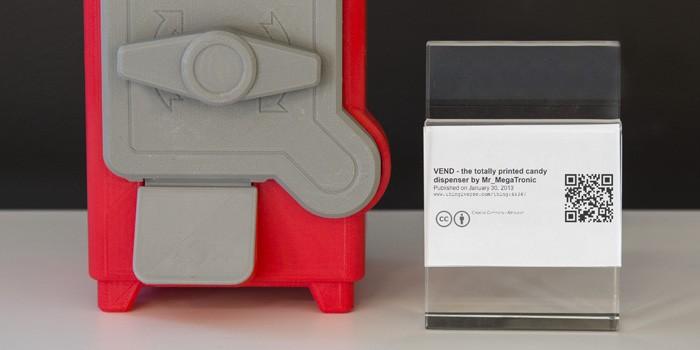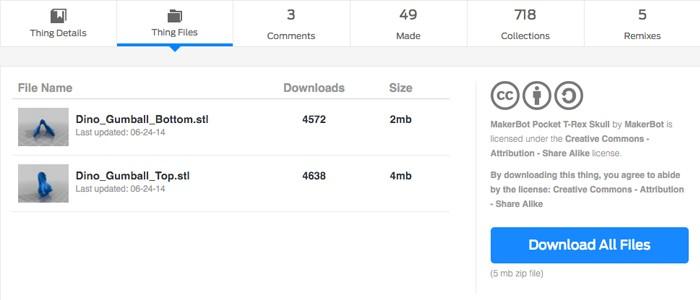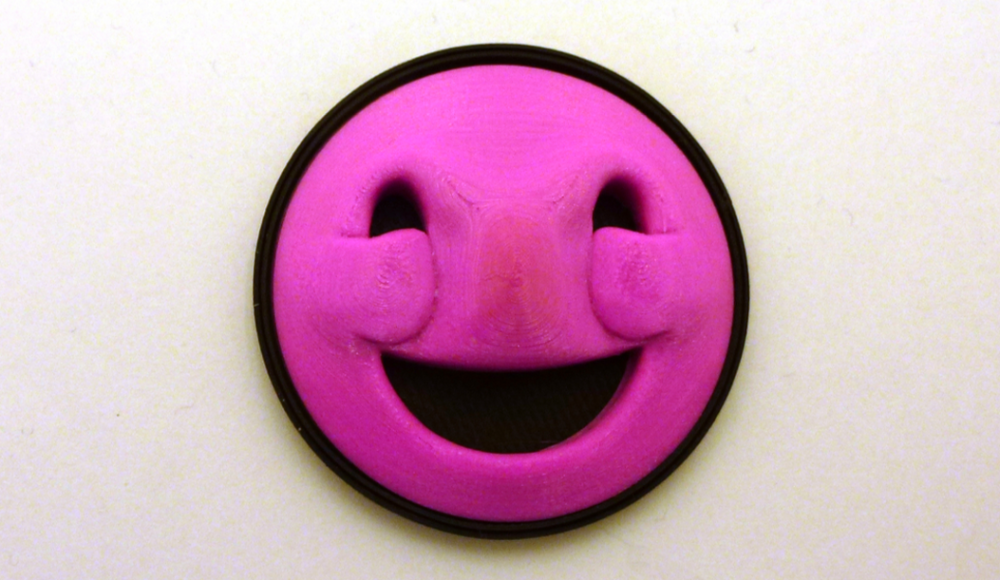MakerBot Releases Guide to Proper Attribution for Creators on Thingiverse, and We All Should Read It
 In the wake of eBay-gate it seems a community-wide discussion about creators’ rights, licensing and attribution has been started, and believe it or not MakerBot of all participants seems to be leading the charge. While no one involved with the drama over that shady eBay store selling 3D models without respecting the Creative Commons licenses seems to be placing any sort of blame on Thingiverse or MakerBot, the company has responded decisively to the issue none the less. Not only did they take some quick, for a big company, steps to stop the improper reselling of Thingiverse users work, but last month they posted an in-depth explanation of exactly how CC licenses work on Thingiverse, and what they mean to users downloading 3D models.
In the wake of eBay-gate it seems a community-wide discussion about creators’ rights, licensing and attribution has been started, and believe it or not MakerBot of all participants seems to be leading the charge. While no one involved with the drama over that shady eBay store selling 3D models without respecting the Creative Commons licenses seems to be placing any sort of blame on Thingiverse or MakerBot, the company has responded decisively to the issue none the less. Not only did they take some quick, for a big company, steps to stop the improper reselling of Thingiverse users work, but last month they posted an in-depth explanation of exactly how CC licenses work on Thingiverse, and what they mean to users downloading 3D models.
This week they’ve expanded on their Creative Commons post with a new guide to properly providing attribution to any designs found on Thingiverse. In their blog post titled “How to Provide Proper Attribution for Designs from Thingiverse” the MakerBot team focuses on the when, where and how users are expected to attribute a design that has been shared with the Thingiverse community. They also explain how to attribute the original creator of a remixed design, a design that is being shared on your blog or social media page and when displaying a 3D printed version of a design. Here are some key excerpts from the blog post:
“Attribution is a condition of every CC license. We believe attribution is incredibly important because those who spend the energy and time to create all the amazing Things on Thingiverse deserve credit for offering their work to everyone. So what does proper attribution look like?”
“According to the Creative Commons-Attribution license (3.0), a licensee must, unless a licensor requests otherwise, keep intact all copyright notices and provide, in part, and ‘reasonably to the medium or means the [the licensee is] utilizing:’ (i) the name of the author (or pseudonym, if applicable), (ii) the title of the work, if supplied; and (iii) the uniform resource identifier, if any, to the extent reasonably practicable.”
“Creative Commons has a helpful resource that provides best practices for attribution. Keeping these practices in mind, we will provide some examples for how to provide attribution and describe how Thingiverse makes it easy for you to do so.”
As the issue with the eBay sellers illuminated, the community isn’t entirely in agreement with the need for attribution. While I always expect there to be a contingent of contrarians to speak up when things like this happen, there were more designers that seemed unmoved and unconcerned with their work being improperly attributed than I would have thought there would have been. Several of these designers pointedly said that if something is shared online that non-attribution should be a given, because that is just how the internet works.

VEND – the totally printed candy dispenser by Mr_MegaTronic. licensed under the Creative Commons – Attribution. [Image courtesy MakerBot.]
The fact is, It just isn’t hard to provide proper attribution. When you download a 3D model from Thingiverse is includes the license and all of the relevant information about how the model can and cannot be shared. And it isn’t as if these licenses are complicated or demand that users jump through multiple hoops, usually it just asks that you include a note about where you found the model and who made it. As I said when I wrote about the eBay nonsense, most of the 3D models that the store was selling actually had extremely liberal CC licenses. All they would have needed to do was include a small note on the bottom of the item page crediting the designer and none of the backlash that they faced would have ever happened. It takes literal seconds to attribute a creator properly, and if we start demanding it we can make the practice more commonplace.
The first step is holding ourselves accountable to uphold the basic courtesy of crediting the creators of media that we use when possible. If I’m being honest, I haven’t always held myself up to this standard. Sometimes I find myself in a rush, sometimes it slips my mind, but I do try, and since the eBay brouhaha I’ve found myself trying harder. We all should, it was a reminder that the designers who create the work that we consume are people, they have feelings and pride and it doesn’t cost us anything to respect that. The second step is by politely pointing it out when others don’t credit someone else’s work, even if it’s just adding the attribution yourself. It all serves as engendering an atmosphere of respect for creators and their work. For the most part, people in communities tend to conform to the community standards of behavior that is expected of them when those around them also conform to it.
While there will never be 100% compliance, there can be more compliance, provided that the community starts demanding it. Even on the internet, most people are decent people and probably don’t actively want to harm someone, even on a superficial level. There is a specific language on the internet that is inherent and that we all know and understand. There is a basic framework of behaviors that we all adhere to because most of us are not misanthropes and are fine with tailoring our behavior to the standards that are set by our communities. Just imagine if those of us who regularly use the internet were just as demanding of protecting creators rights as we are of demanding spoiler warnings when talking about new movies or TV shows. Don’t the people actually creating media deserve just as much respect as we demand for ourselves while consuming it?
You can catch up on all of the eBay seller/Thingiverse drama starting here, and then here, and finally here. You can read more about MakerBot and Creative Commons Licenses on Thingiverse here, and some of CEO Jonathan Jaglom’s recent comments about respecting and expanding the Thingiverse community here. And you can read MakerBot’s guide to properly attributing Thingiverse models here. Discuss your thoughts on this issue in the MakerBot Guide to Giving Thingiverse 3D Models Credit forum over at 3DPB.com.
Subscribe to Our Email Newsletter
Stay up-to-date on all the latest news from the 3D printing industry and receive information and offers from third party vendors.
You May Also Like
Precision at the Microscale: UK Researchers Advance Medical Devices with BMF’s 3D Printing Tech
University of Nottingham researchers are using Boston Micro Fabrication‘s (BMF) 3D printing technology to develop medical devices that improve compatibility with human tissue. Funded by a UK grant, this project...
3D Printing Webinar and Event Roundup: April 21, 2024
It’s another busy week of webinars and events, starting with Hannover Messe in Germany and continuing with Metalcasting Congress, Chinaplas, TechBlick’s Innovation Festival, and more. Stratasys continues its advanced training...
3D Printing Webinar and Event Roundup: March 17, 2024
It’s another busy week of webinars and events, including SALMED 2024 and AM Forum in Berlin. Stratasys continues its in-person training and is offering two webinars, ASTM is holding a...
3D Printed Micro Antenna is 15% Smaller and 6X Lighter
Horizon Microtechnologies has achieved success in creating a high-frequency D-Band horn antenna through micro 3D printing. However, this achievement did not rely solely on 3D printing; it involved a combination...































